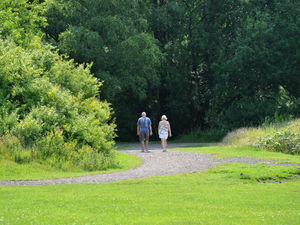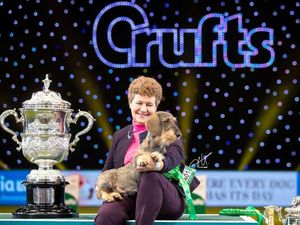Battle of Britain: Hidden history shines light on tragic stories
Bader, Tuck, Malan... but in a list of the legendary heroes of the Battle of Britain, John Jackson does not appear.
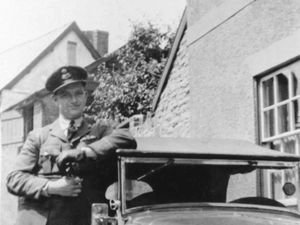
In the public imagination the fighter pilots were dashing and glamorous, gladiators of the air, and immortalised by Churchill as “The Few.”
But behind every pilot was a team, airmen like Aircraftman First Class Jackson, from Shropshire.
He died during the Battle of Britain, but not in aerial combat. He was killed along with many others when Luftwaffe bombers pounded Biggin Hill airfield on August 30, 1940.
A week later his wife Hilda gave birth to their second child.
Now his tragic story has been highlighted in a new book in the 80th anniversary year by Battle of Britain expert and historian Dilip Sarkar, who has sought to give some of those who died a voice, in most cases for the first time.
Jackson hailed originally from Hulme, Manchester, and joined the RAF in 1936. He married Hilda Walker at West Cheshire Register Office on February 5, 1938, and set up home at 35 King Street, Wellington.
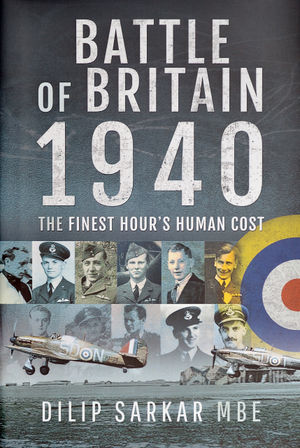
This was, according to a newspaper report at the time of Jackson’s death, the home of Hilda’s parents, so perhaps she lived there with them while her husband moved from air station to air station.
Jackson joined the Spitfire-equipped 610 Squadron and was a fully trained fitter on the fighters’ legendary Rolls-Royce Merlin engines.
And he had the misfortune to be at Biggin Hill when it suffered its worst attack of the summer of 1940, and died when sheltering in the airman’s trench, which received a direct bomb hit. He was 23.
In his book, called “Battle of Britain 1940 – The Finest Hour’s Human Cost,” Sarkar writes that he was buried, along with Biggin Hill’s other victims of the raid, at St Mary Cray Cemetery, Orpington, Kent.
“John Joseph Jackson’s family could at least occasionally make the long journey from Shropshire, but that was no recompense for losing a loving husband and father.
“A week after John Jackson’s death, his widow, Hilda, gave birth to the couple’s second child, another daughter, Jacqueline.
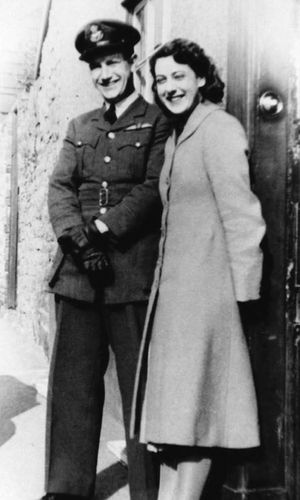
“Grandson Julian Spragg commented: ‘I get the impression that afterwards Hilda just got her head down and got on with providing for her two children. It certainly could not have been easy, being a war widow. Although my mother, Hazel, does not remember her father, I feel sure that at least she saw and touched him – which was denied to Jacqueline. Very sad’.”
Sarkar adds: “It is estimated that during the Battle of Britain 312 RAF personnel were killed on the ground and 467 injured. This is largely ‘hidden history’ because rarely do accounts appear concerning these men and women who served in less glamorous roles.”
Another local Battle of Britain hero to come under the spotlight in his book is Pilot Officer Jack Hamar, of Knighton, whose family ran a wholesale and retail grocery and provisions business, William Hamar & Son.
“Within this rural idyll, Jack first attended Knighton Primary School before becoming a pupil at the John Beddoes Grammar School in Presteigne.
“By this time he was already addicted to speed, largely on account of his grandfather’s influence, who was a great horseman, always owning the fastest horse in town, and before the First World War Jack’s father and three uncles were motorcycle enthusiasts, collectively known as the ‘Mad Hamars’,” writes Sarkar.
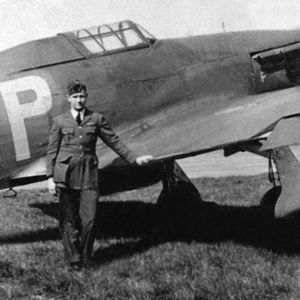
After leaving school Jack worked in the family business but his need for speed saw him progress from an Ariel 250cc motorcycle to an Ariel Red Hunter, which he rode successfully in a number of hill climbing competitions.
Then came fast sports cars – first a three-wheeler Morgan, then an Aero Minx, and finally an MG. Jack joined the RAF Volunteer Reserve in May 1938 and progressed to the eight-gun Hawker Hurricane fighter, serving with 151 Squadron.
Sarkar has researched in depth his combat record which began on May 17, 1940, when the squadron spotted German Stuka dive bombers and intercepted them over Valenciennes.
Of six Stukas claimed destroyed, one fell to Hamar’s guns – his first kill.
“Jack’s first brush with the Luftwaffe, however, could easily have been his last. Upon landing he counted 10 bullet holes in his Hurricane.”
A few days later he was to claim another Stuka.
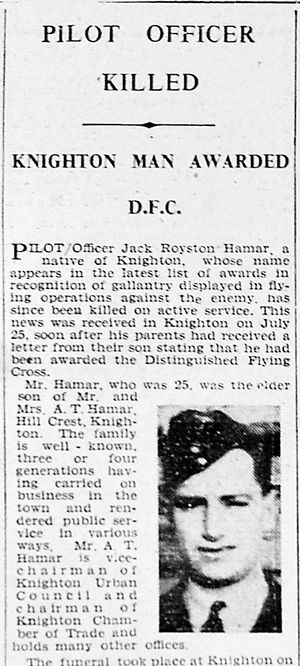
The completion of the Dunkirk operation and the Fall of France saw Britain fighting on alone and the Luftwaffe started to give its full attention to paving the way for an invasion.
Hamar continued to be in regular combat and on July 15 Sarkar tells how his squadron had cause to celebrate when a signal was received that he had been awarded the Distinguished Flying Cross.
“The Air Ministry’s recommendation for the award, approved by King George VI, read: ‘Since December, this officer has participated in all operations and most of the patrol flights undertaken by his squadron.
“’He has shown coolness and courage of a high order and has personally destroyed six enemy aircraft.’
“It was a well-deserved and early honour.”
Jack had been the wingman of the Squadron Leader, Teddy Donaldson, who said: “From mid-July we slept the night in dugouts on the airfield at North Weald. There were eight pilots on camp beds at the beginning.
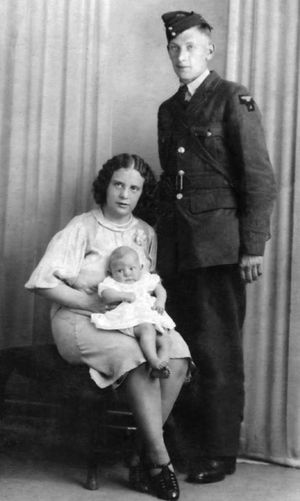
“By July 24, only Jack and I were left. On the previous night Jack had sat on my bed and said: ‘Sir, I think you and I will come through this. We have been to hell and back together and are still alive.’
“I said: ‘For God’s sake don’t say that, it’s bad luck!’”
It proved to be a prophetic comment, because the following day Jack Hamar was killed.
The weather was appalling, but on receiving a report of an unidentified aircraft circling Felixstowe, Hamar jumped at the chance to check it out.
No sooner had he took off, however, than it was identified as friendly.
Sarkar quotes Donaldson as saying: “We turned around and, flying slowly at 120mph and only some 60ft above the ground, I waited for North Weald to reappear, which it did in a few minutes.
“I ordered Jack to break. To my horror he broke upwards and commenced an upward roll.
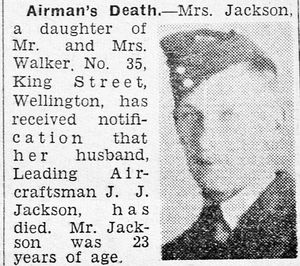
“In a Hurricane it was impossible to carry out such a manoeuvre at that low speed. As I saw him start his right-handed roll, I screamed ‘Don’t, don’t!’ down the R/T – but it was too late. Jack stalled and hit the deck upside down.
“I was on the ground and beside him within seconds. Jack had had his hood open to improve visibility in the awful weather conditions, which had caused massive injuries. I was devastated.”
Within an hour of his family in Knighton receiving the joyful news that he had been awarded the DFC, they received the telegram notifying them of his death.
Pilot Officer Jack Hamar, who being aged 25 would have been regarded as an “old man” by many other Battle of Britain pilots, was given a military funeral at Knighton Cemetery, where he lies.
“Battle of Britain 1940 – The Finest Hour’s Human Cost” is published by Pen & Sword and costs £30 – pictures with this article are from the book.

